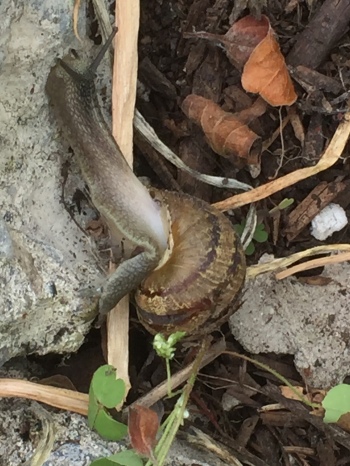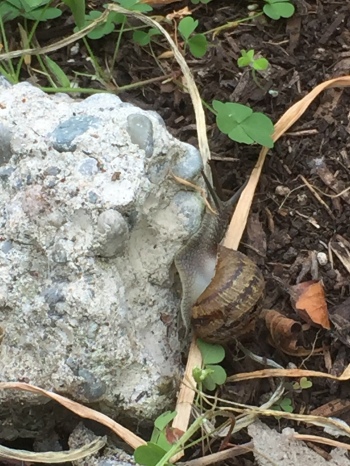Last week, when I removed an overgrown chive plant from my garden, I discovered it had been covering two snails. One appeared to be missing a big part of its shell and mucous was pouring out of that area. It looked like the other snail was eating the mucous. When I separated them, the wounded one didn’t move but the other one did. I followed its movement taking photographs along the way.
Notice in the photos below that the snail is approaching a crevice in the piece of concrete.



Wow!
Turning to the right.

And then pulling his shell up.

He has almost made it to the top.

Success!

As I continued to watch, I decided to follow him by video.
You are about to enter a snail’s world. [The snail you see at the very end of the first video is the wounded snail. The snail from the photographs above is the star of the first video (47 seconds) and all of the second one (2.59 minutes).]
I thought he was headed in a particular direction but I was wrong!
After about 20 minutes, the wounded snail began to show signs of life. In time it started on its own journey. So was it really wounded? If not, had they been mating?
I looked for information and videos on snail mating but nothing that was described or shown looked like what I had seen. There is so much I don’t know. I appreciate the glimpse into the wonders of nature that this experience has given me.
Weekly Photo Challenge: Fun (for me!)

